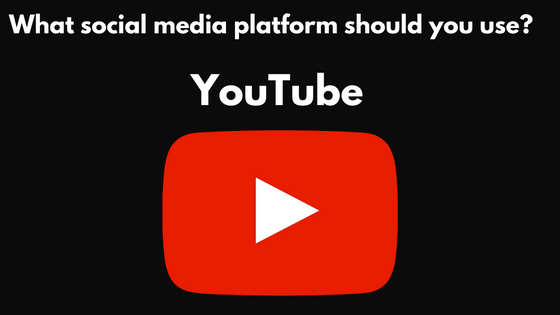
This is the last in a series of posts that looks at the question, “What social media platform should you use?” The first post looked at some of the most popular social media platforms. The second post looked specifically at Facebook and Twitter. The third looked at two popular social media platforms that focus on pictures and short video clips. In our last post, we are going to be looking at platforms that focus on video.
YouTube dominates the video but there are other platforms. About a decade ago I would occasionally visit Daily Motion. It launched right around the same time as YouTube but has not enjoyed the success of its Google-owned competitor. I visited it for the first time in years when doing research on this article. There are media companies posting content but it’s not a platform that I would recommend using for your business.
I used to also visit Vimeo. It’s another platform that I stopped using years ago. It’s more of a niche platform that focuses on film. From a business standpoint, it’s not really worth your time, unless you’re in the business of film.
As we have talked about in previous posts, Facebook, Twitter, Instagram, and Snapchat all support video. However, nobody comes close to YouTube for the sheer volume and variety of content. If you’re looking for video content YouTube is the place to go.
YouTube
When I wrote the first article in this series YouTube had 1.5 billion users. Just a few days ago I saw that it is now 1.9 billion users. Viewers watch over 180 millions hours of content on TV screens every day but 70% of content viewed is viewed on mobile. It is the second largest social media platform behind Facebook and the second largest search engine behind Google.
Once you have created an account or channel, you can personalize both the avatar and the channel art for your business. You can also fill out information about your business such as the services you provide. YouTube doesn’t use a timeline like many other popular platforms such as Facebook, Twitter, and Instagram. The video content that you create and upload appear as single videos or you can set up playlists for similar content.
Interaction with your channel can happen in multiple ways. Like other platforms, people can comment and like the content. They can also be shared on other social media platforms such as Facebook, Twitter, Google Plus, and Reddit. If people determine they want to follow your channel they would be able to subscribe. I have several subscriptions and when new content is created, I usually get an email alerting me.
Also, as with other social media platforms, YouTube offers you a way to advertise. Unlike the other platforms, the advertising is in video form. You can target your audience by choosing locations, demographics, and interests. Ads can be as long as 60 seconds or as short as 6 seconds. You will only pay for ads if the ad is watched for 30 seconds, is watched in its entirety, or if somebody clicks on the ad. Ads are placed as bumpers in front of other YouTube content.
If you need help with your channel, YouTube offers Creator Academy. You will be able to take courses that cover such topics as creating content, getting discovered, YouTube analytics plus many more topics to make your channel shine.
Final Thoughts
Creating video content may be intimidating but it shouldn’t be. Video continues to grow and YouTube is an excellent platform to help grow your business. This is really a no brainer. Unless you are reaching for a specific niche, it’s all about YouTube.
- Is Your Marketing Connected? - March 6, 2025
- Stop Planning and Start Strategizing - October 24, 2024
- The Importance of Creating a Connection With Your Marketing - June 6, 2024
